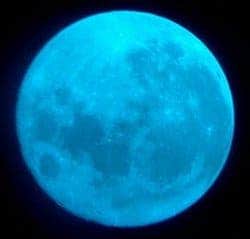
Ok, it’s not actually blue, but this is what two full moons occurring in the same calendar month are commonly referred to. This month of August, the skies will be blessed with not one, but two full moons, the first on Aug. 1 and the second on Aug. 31 – don’t mean burst your bubble or anything, but they’ll appear just as they usually have.
The common phrase “once in a Blue Moon” can be traced back to 1824 and refers to occurrences that are uncommon, though not truly rare. This August event fits perfectly in the description, since two full moons in the same month only happen every three years and you gotta admit no one could miss this pun – it’s just too good!
Two full moons in one month – how so ?
The moon takes 29.5 days for a complete revolution around the Earth. Since the calendar months are typically 30 or 31 days long, such an event can squeeze in every once in a while, or every 2.66 years to be more exact. Also, literary blue moons, even green moons, aren’t unheard of. For instance, according to NASA, in 1883, the Indonesian volcano named Krakatoa erupted. The ash plunged for hundreds of meters into the air and was filled with tiny particles just the right size to scatter right light, while other colors were allowed to pass (the spectrum is formed by three primary colors RED – GREEN – BLUE). White moonbeams shining through the clouds emerged blue, and sometimes green. Neat, right?






